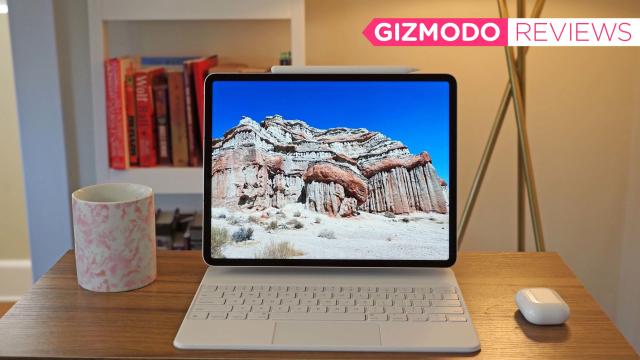The new 12.9-inch M1 iPad Pro is an incredible device. It’s powerful. It’s fast. It’s future-proof. Its screen is ridiculous, and I mean that in the best possible way. It’s also overkill — for now.
The new model is light years ahead of even last year’s 12.9-inch Pro. With a new miniLED display that puts an equivalent of Apple’s $8,499 Pro Display XDR in a smaller, cheaper package, plus the M1 chip and its performance gains, the 2021 iPad Pro is basically a perfect piece of hardware. There is no better tablet on the market.
But when it comes to choosing the perfect machine for getting work done, well, it’s not quite so clear.
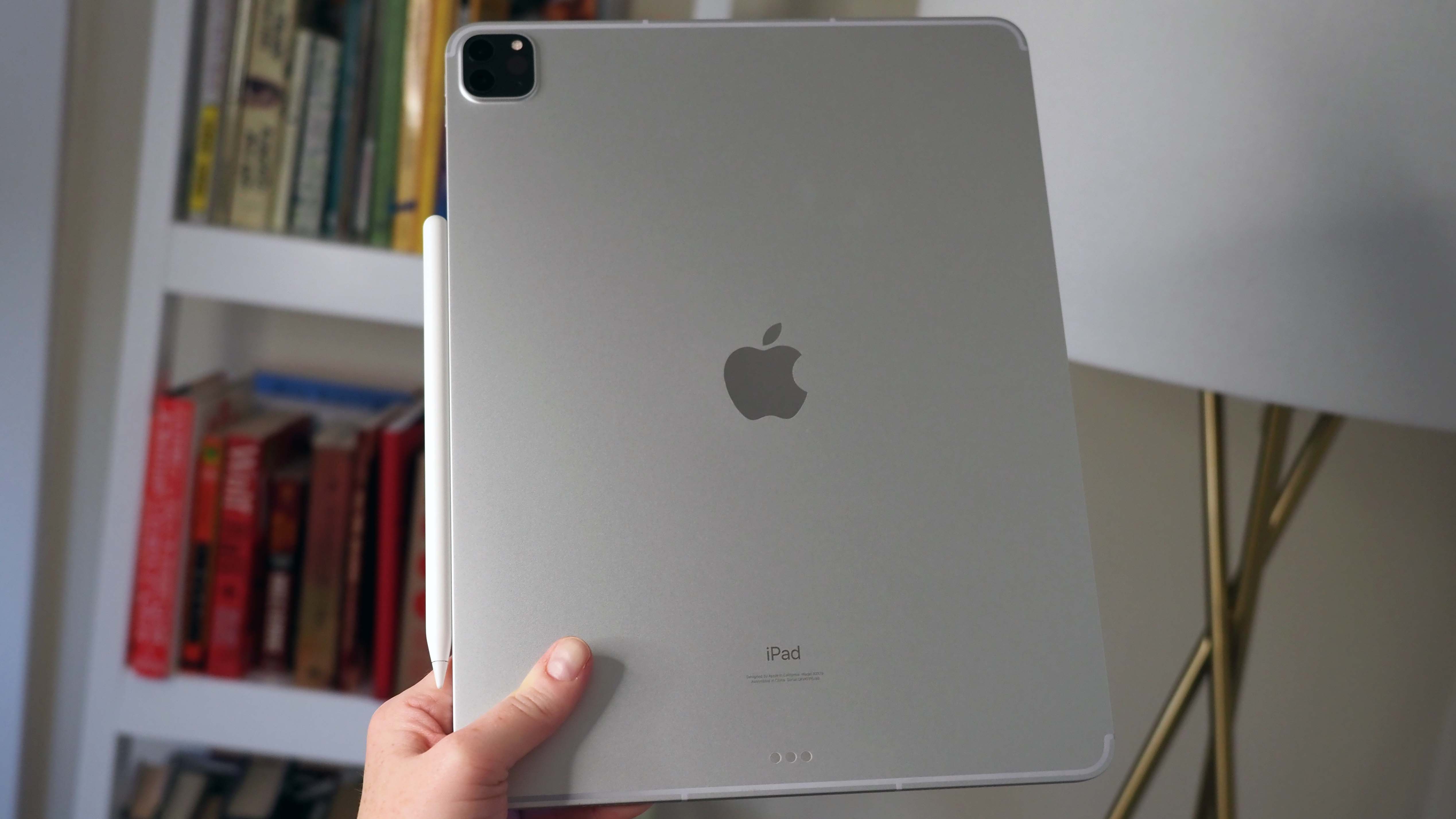
Apple iPad Pro (2021)
What is it?
Apple's first M1 iPad with miniLED display
Price
Starts at $1,199; $2,699 as reviewed
Like
Stunningly bright display, particularly when viewing HDR content; M1 delivers a serious performance boost
Don't like
Battery life could be better; iPad software is still lacking; Centre Stage can't make that camera placement good
A Big, Beautiful, Bright Screen
The big news at Apple’s iPad launch event was the iPad’s switch to M1, Apple’s homegrown ARM-based silicon, and that is a big deal. But the biggest change in my experience using an iPad Pro is the 12.9-inch model’s miniLED display. (The smaller 11-inch Pro sticks with the standard Liquid Retina screen from last year’s lineup. I did not test that version for this review.)
The larger Pro has what Apple calls a Liquid Retina XDR display, with a 2732 x 2048 resolution at 264 ppi and a variable refresh rate — up to 120Hz depending on what you’re doing. Given that Liquid Retina XDR is not an industry standard phrase, allow me to break down what this display entails exactly: Apple has packed 10,000 miniLEDs into 2,596 local dimming zones, with a 1,000,000:1 contrast ratio that means that you can achieve deep blacks and bright whites without sacrificing detail. Think of miniLEDs as a compromise between the LCDs of old iPads and the OLED panels in new iPhones.
The new Pro’s display can hit 1,000 nits full-screen brightness and 1,600 nits in specific scenarios, like viewing high dynamic range content. The XDR part, which applies to both the Pro Display XDR and now this $1,199 iPad, stands for Extreme Dynamic Range, which is Apple’s way of saying HDR content looks really, really good on these devices.
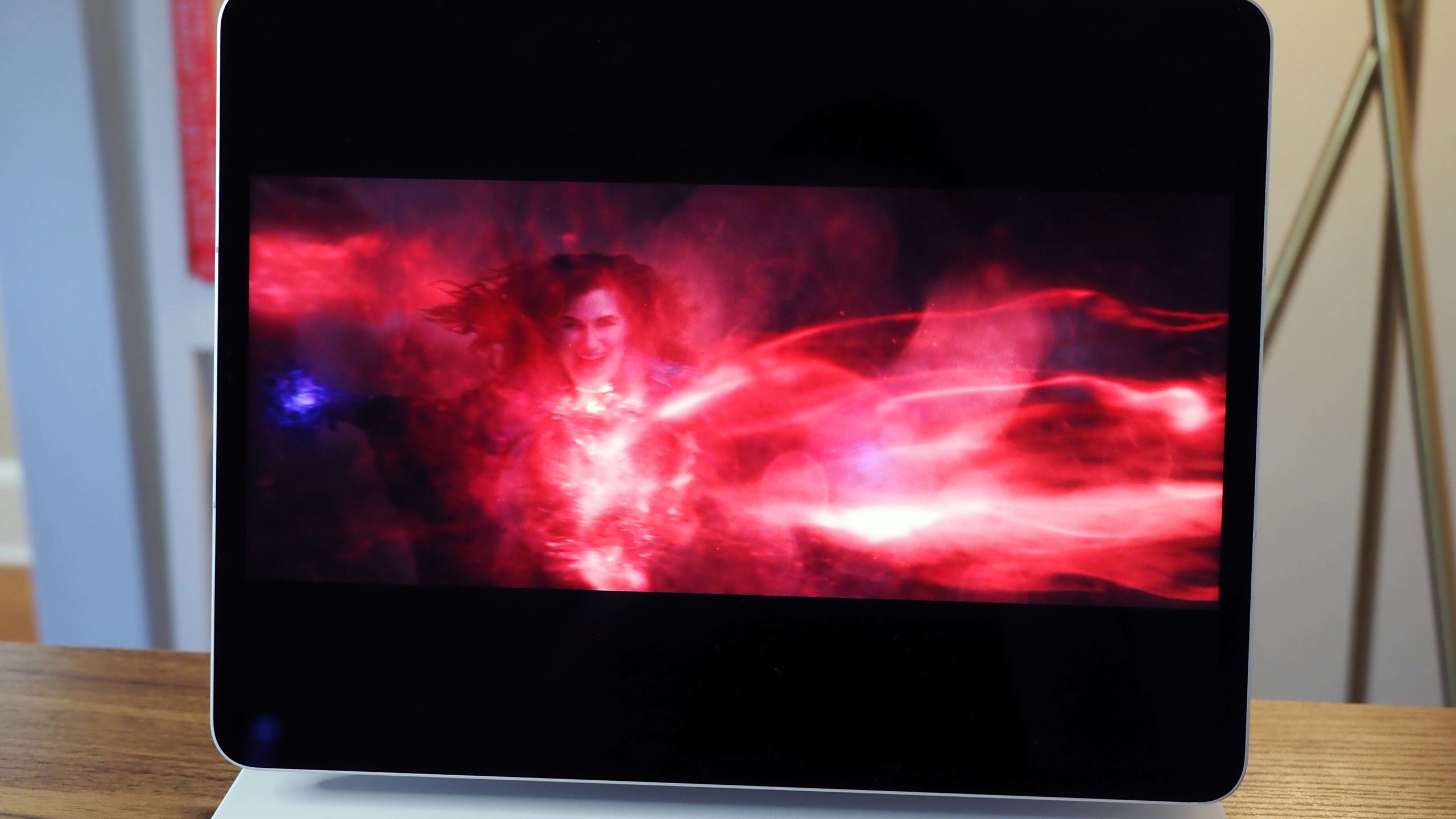
I wanted to see what this meant in actual life, so I looked at a library of the same HDR photos on the new 12.9-inch Pro placed next to last year’s 12.9-inch Pro, which is decidedly not XDR. The effect is, well, I wouldn’t say extreme, but absolutely noticeable. The screen is overall much brighter — not twice as bright, but definitely brighter — and shadows and highlights in HDR photos are more detailed. I can see how that would be useful for pro photographers and filmmakers to edit their work. (I am neither of those things, for full disclosure.) As good as images and videos look on this screen, creators don’t usually know how their intended audiences will be viewing that content. Most of them will almost certainly not be viewing them on a miniLED panel with extreme dynamic range. But if they are, it’s going to look great.
This display is also pretty incredible for watching TV shows and movies, which is my preferred use for the iPad — any iPad — when I’m on the go. Again, everything looks incredible, as you can see in the WandaVision still above.
I never experienced the blooming effect which can happen with miniLEDs, and the black bars that appear around content were pure black. I sat in a pitch black room and watched a bunch of really soothing HDR paint videos from artist Roman De Giuli (I swear they’re cooler than I’m making them sound), and just, wow.
I’m not sure I would upgrade from last year’s Pro just for this screen, but it is certainly more immersive than my MacBook’s, that’s for sure.
M1 Brings the iPad Up to Speed
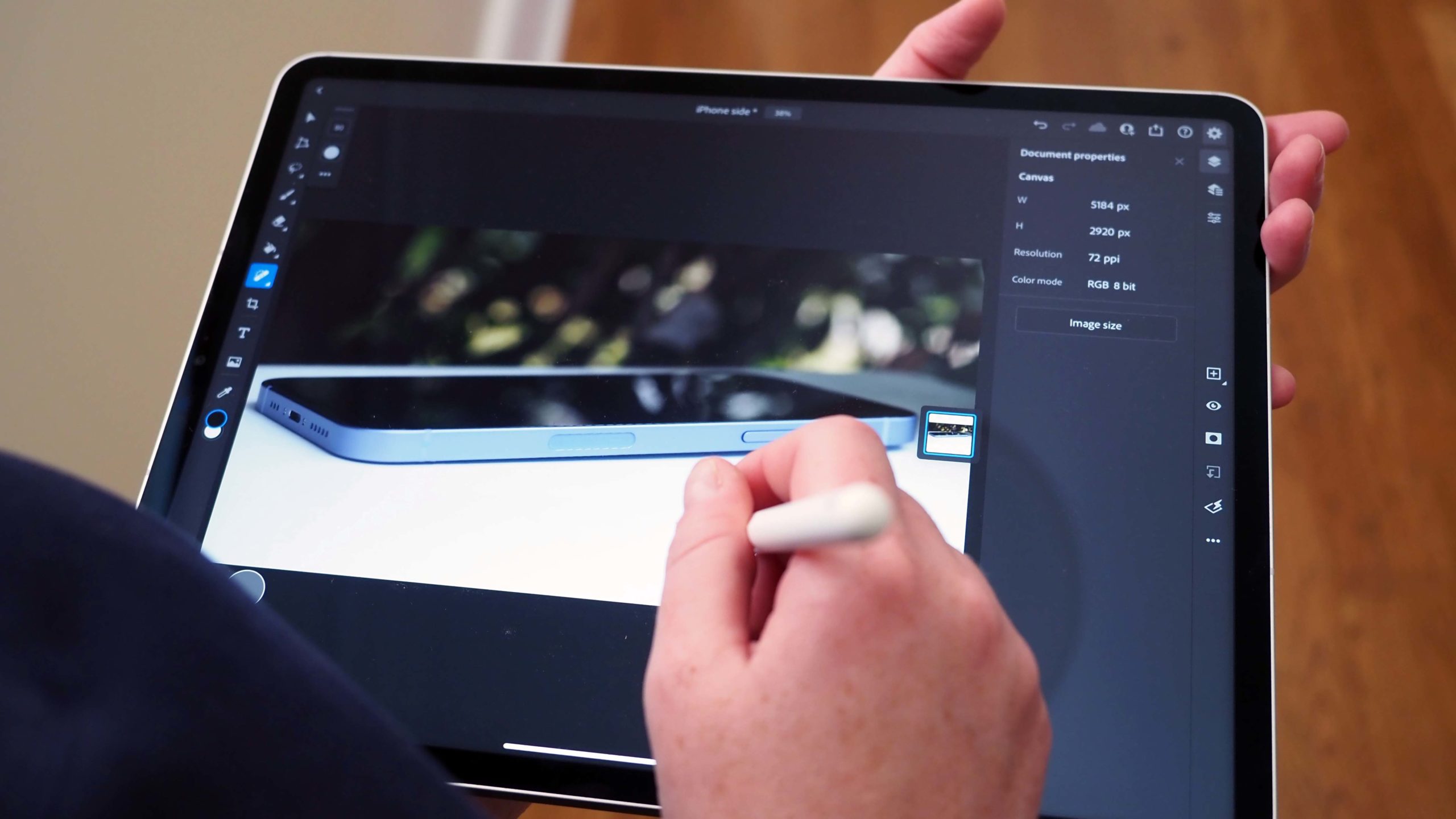
Speaking of MacBooks: The iPad Pro has the same exact custom M1 chip that Apple has baked into the most recent MacBook Air, MacBook Pro, Mac Mini, and the 24-inch iMac.
You don’t even get the option to choose which M1 you want on the iPad Pro, as you do with the Macs. You get an 8-core CPU and 8-core GPU (the others offer a 7-core GPU option for a lower price) with a 16-core Neural Engine and 8GB or 16GB of RAM, depending on which storage size you choose. The options there are 128GB, 256GB, 512GB, 1TB, or 2TB. Sound familiar? These are the exact same specs packed inside the Macs. The iPad does have one downside: It only has one port, which seems bizarre for a professional device, but at least this time Apple has made that USB-C port capable of supporting Thunderbolt 3 and USB 4 to connect with accessories that need high bandwidth (up to 40Gb/s). You can even connect the Pro to the Pro Display XDR itself.
The performance gains that the M1 has brought to the MacBooks and iMac are reflected in the iPad Pro, too. In Geekbench 5, a test of overall system performance, the Pro’s single-core (1718) and multi-core (7292) scores were almost identical to the MacBook Air, MacBook Pro, and iMac. Compared to last year’s 12.9-inch iPad Pro with A12Z Bionic processor, synthetic benchmarks reveal the new iPad is almost twice as powerful.
In the real world, that means everything is all around speedier. Working in Photoshop on the iPad with the Apple Pencil, applying edits to multiple images, was a breeze.
Now that the M1 has leveled the performance playing field for Apple devices, anything you can do on a Mac, you should now be able to do on an iPad. Of course, it’s not actually that simple. More on that in a minute.
Average Battery Life, and the Disadvantages of 5G
I was curious about the new iPad Pro’s battery life, given that miniLEDs are efficient and the M1 had been a boon for battery life on the MacBook Air and MacBook Pro.
But this year’s 12.9-inch iPad Pro lasted just 9 hours and 2 minutes, a full hour less than last year’s iPad Pro, on our video rundown test over wifi — and that’s not taking into account the notorious battery drain that is 5G.

I didn’t even get to use 5G on the iPad, though it is now capable of 5G speeds. For some reason Verizon’s U.S. 5G network does not extend to my house, though the carrier’s coverage map shows that it does. But that’s the problem with 5G in most regions — it’s kind of unreliable. Coverage is spotty, even in major U.S. cities like Los Angeles, where I live, and the gigabit speeds promised by millimetre-wave spectrum, which forms part of Verizon’s 5G network, aren’t actually attainable inside. (Verizon notes that its high-speed ultra-wideband 5G network is available “outdoors.”) I would have to walk a couple blocks to pick up a Verizon UWB 5G signal, and anyway I am not about to stand on a street corner to use an iPad Pro.
All that is to say: Taking advantage of the iPad’s cellular connection is certainly useful in a pinch, but it will drain your battery life (even just using LTE like I did), so stay on wifi if you can.
We Need to Talk About the iPad’s Camera
The iPad Pro’s rear cameras with LiDAR are capable lenses. I never use them, but if you work in augmented reality, I imagine they are useful. What I do use all the time, though, is the iPad’s front-facing camera. When Apple announced they had upgraded the lens, I was stoked.
The new Pro sports a new 12-megapixel ultra-wide-angle lens with 122-degree field of view, which enables a new feature called Centre Stage. Centre Stage uses that expanded field of view to track you as you move within the frame during video calls. This works in FaceTime as an opt-in feature, and Apple is offering a Centre Stage API so it will be available on other popular video-calling apps like Zoom.
Centre Stage works as promised. When you move, it adjusts to make your face the centre of the frame, and it happens smoothly. You can’t walk completely out of frame, of course, because the iPad itself doesn’t move, but it does give you some more freedom during calls.
My issue is the placement of the lens, which is still to the left of the screen when you hold the iPad horizontally. Of course, you have to use the iPad in landscape mode when you attach it to a keyboard like Apple’s own Magic Keyboard for iPad, and that’s how I prop up the tablet to make video calls.
That camera placement is horrible. First, the angle is bad and we’re all barely holding it together during video calls these days to begin with, and second, it’s totally unintuitive for those of us who are used to using laptops with landscape-oriented screens that have webcams at the top. Of course, I could hold the iPad vertically to take all my calls, but reader, I am not going to do that and I refuse to believe I’m alone in this.
(Side note on the Magic Keyboard, which is $449 but absolutely elevates the iPad experience: The new 12.9-inch Pro fits just fine in the old Magic Keyboard. Though it is thicker than the old Pro, the keyboard case closes easily. And now back to our regular scheduled programming.)
The Future of iPadOS
The iPad’s hardware is a non-issue at this point. Apple’s tablet gets better with every iteration, and the M1 iPad with miniLED display is truly impressive. There are no other tablets that can compare.
But the iPad Pro isn’t competing against other tablets. It’s competing against the Mac. And though the iPad is very, very capable, its software often feels hamstrung compared to the Mac’s. I give this example all the time, but my most-used app is Airtable, a project management tool I use for my job all day every day. The iPad app looks and works perfectly, just like the Mac app, until I have to do a random task and it boots me to Airtable on the web, which would never happen on the Mac.
Then there’s the issue of file management on the iPad, which still confounds me and I’ve been using iPads for years.
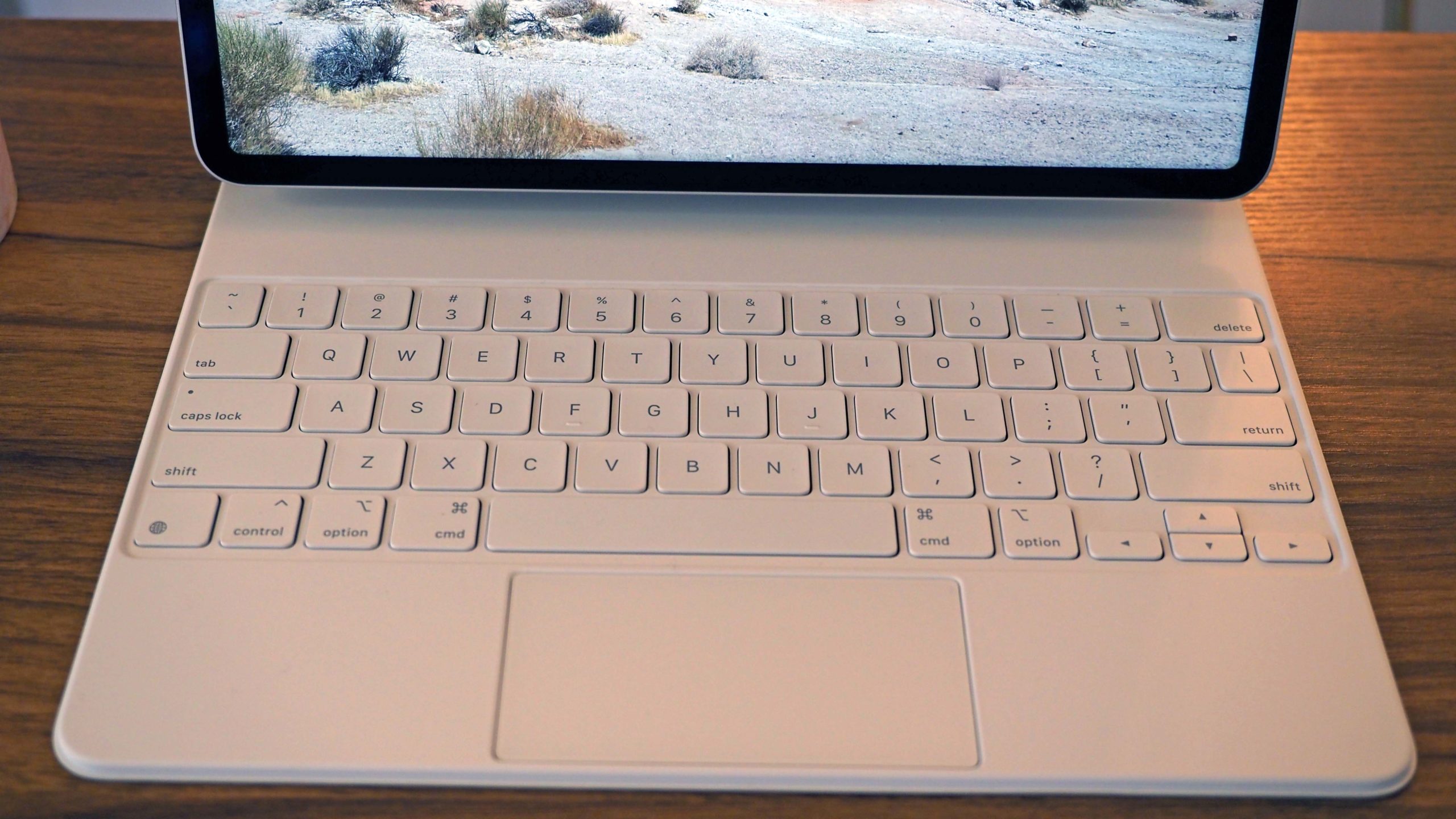
But my problems are small potatoes. The new iPad Pro has the potential to be a powerful machine for creative professionals — that’s clearly what Apple is going for here. Pro audio producers can use the new Pro for editing music, podcasts, what have you, using five studio-quality microphones built in for clean audio recordings. I would venture to guess that the M1 could easily handle importing, laying up, and cutting together multiple tracks without a hiccup. So I asked my husband, a professional producer who has had a long career in public radio and podcast production for major audio companies, if he could get all his work done on the iPad Pro. He laughed.
“I don’t know a single audio producer who would use an iPad to do all their work,” he said. “It would be useful as a second display, so I could quickly scroll through a script as I cut. But that’s it.”
The iPad has supported mice and trackpads for more than a year now, which makes precise editing much easier than scrubbing through audio tracks or film clips with your fingertip. That was a huge barrier that is now gone. But the software support is still lacking. There are no iPad versions of Adobe Audition or Avid Pro Tools, two of the essential digital audio workstations (DAW) that professional producers rely on. There’s not even a full-featured version of Logic Pro, Apple’s own audio editor, for iPad. The same issues seem to apply for pro filmmakers, too — see: no Final Cut Pro for iPad — based on my cursory searches around the internet. I’m sure some iPad enthusiasts in both the audio and film industries have found workarounds for the lack of software support, but it seems bananas to me to drop more than $1,000 (closer to $2,500, if we’re being honest) on a machine that isn’t as fully featured as a cheaper Mac.
Now, I’m not one to bemoan the lack of a touchscreen Mac. I think it’s possible to have a touch-first iPadOS experience that’s just as good as the cursor-driven Mac one, in different ways. But iPadOS is not as good as macOS. And now that the iPad Pro has an M1 chip, there’s really no good reason as to why that is.
So the question remains: Who is this iPad for? That answer may soon change. Apple’s annual Worldwide Developers Conference is just weeks away, and I would bet money — just a few dollars, but still — that the company has big announcements in store for developers to be able to take advantage of this overpowered device.
If you plan to use this for work, I would maybe hold off until we see what’s next for iPadOS. But if you want the Pro for fun, well, go wild. It’s the best iPad you can buy.
